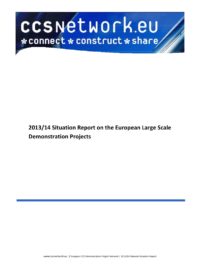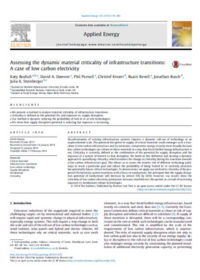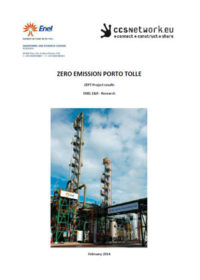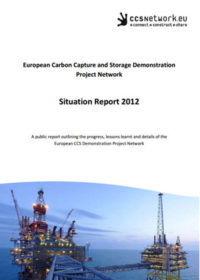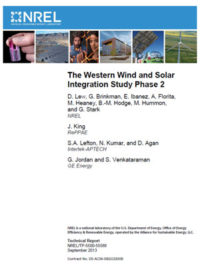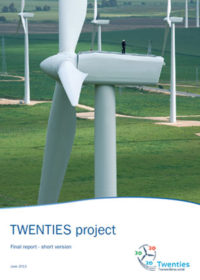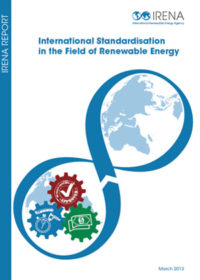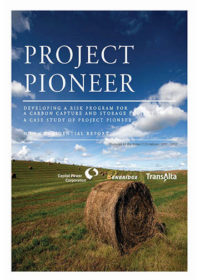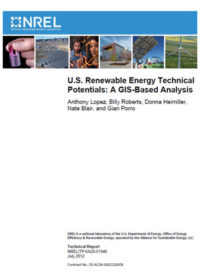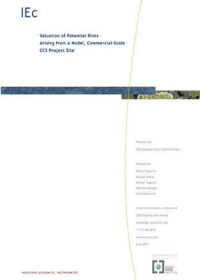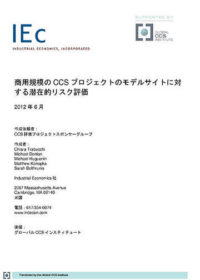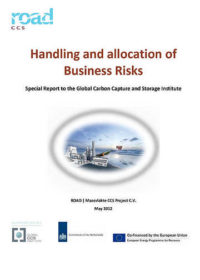Resources
Publications
Our publications, reports and research library hosts over 500 specialist reports and research papers on all topics associated with CCS.
View our Publication Library Disclaimer.
Filter by
Situation report 2013/14: European large scale demonstration projects
19th November 2014
Topic(s): Carbon capture use and storage (CCUS), Engineering and project delivery, Permitting, Policy law and regulation
This second edition of the European CCS Demonstration Project Network: Situation Report 2013/14 includes the findings related to the participating projects from both the knowledge sharing events, presentations, and the internal survey conducted via the Information and Experience Gathering (IEG) questionnaire. The report covers progress made by the projects in capture, transport, storage, regulatory development, public engagement and knowledge sharing within and beyond the Network.
Little has changed from previous reporting for the projects in terms of planning and following timelines. Almost all of them have experienced delays with various permits and with reaching a final investment decision (FID). In 2013, two projects, Porto Tolle and Compostilla received a negative FID. Ciuden, the academic partner of Compostilla project, remains however with collaborative status in the Network. The current timeline for the ROAD project suggests that they could be operating and injecting CO2 by 2017. For Don Valley project this is planned for 2018.
The Network is composed of one oxyfuel power project (former Compostilla), one IGCC power project which may also include gas oxyfuel technology (Don Valley), one post-combustion power project (ROAD) and a gas processing project (Sleipner). Sleipner is the only project currently in operation. All will capture over 1 million tonnes of CO2 per annum, at a capture rate of over 90%. SOx and NOx are quoted by the projects as the most common and expected impurities in the slip stream gas.
Disclaimer
The content within the Global CCS Institute Publications, Reports and Research Library is provided for information purposes only. We make every effort and take reasonable care to keep the content of this section up-to-date and error-free. However, we make no claim as to its accuracy, currency or reliability.
Content and material featured within this section of our website includes reports and research published by third parties. The content and material may include opinions and recommendations of third parties that do not reflect those held by the Global CCS Institute.
Assessing the dynamic material criticality of infrastructure transitions: a case of low carbon electricity
17th February 2014
Topic(s): Engineering and project delivery, Renewables
Decarbonisation of existing infrastructure systems requires a dynamic roll-out of technology at an unprecedented scale. The potential disruption in supply of critical materials could endanger such a transition to low-carbon infrastructure and, by extension, compromise energy security more broadly because low carbon technologies are reliant on these materials in a way that fossil-fuelled energy infrastructure is not.
This paper, authored by K. Roelich et al., was originally published in Applied Energy.
Disclaimer
The content within the Global CCS Institute Publications, Reports and Research Library is provided for information purposes only. We make every effort and take reasonable care to keep the content of this section up-to-date and error-free. However, we make no claim as to its accuracy, currency or reliability.
Content and material featured within this section of our website includes reports and research published by third parties. The content and material may include opinions and recommendations of third parties that do not reflect those held by the Global CCS Institute.
Zero Emission Porto Tolle: ZEPT Project results
1st February 2014
Topic(s): Carbon capture use and storage (CCUS), CO2 storage, Engineering and project delivery
This report summarises the main lessons learnt and key findings from the Zero Emission Porto Tolle (ZEPT) project. The ZEPT project was funded by the European Energy Programme for Recovery (EEPR) during the period 2009-2013 and covered the design, procurement and construction of a demonstration CCS plant as well as the detailed site characterisation, to verify the feasibility of the injection and storage of CO2 in a safe and verifiable manner.
Disclaimer
The content within the Global CCS Institute Publications, Reports and Research Library is provided for information purposes only. We make every effort and take reasonable care to keep the content of this section up-to-date and error-free. However, we make no claim as to its accuracy, currency or reliability.
Content and material featured within this section of our website includes reports and research published by third parties. The content and material may include opinions and recommendations of third parties that do not reflect those held by the Global CCS Institute.
Situation report 2012: a public report outlining the progress, lessons learnt and details of the European CCS Demonstration Project Network
1st October 2013
Topic(s): Carbon capture use and storage (CCUS), CO2 capture, CO2 storage, Engineering and project delivery, Permitting, Policy law and regulation
The European Carbon Capture and Storage Demonstration Project Network's Situation Report 2012 is a publication from a community of large scale projects dedicated to knowledge sharing (the Network). This report is intended for those interested in some of the specific technical, regulatory and project management considerations of carbon capture and storage (CCS) as a large-scale, low-carbon technology for the electricity generation and industrial sectors (steel, iron, chemical, methanol, gas process, cement, etc.).
This report provides both a brief outline of the major elements within the development and running of a CCS project, and specific details generated by the Network. While a number of thematically specific reports are regularly made public by the Network, this report attempts to provide an overall outline of the technical details, lessons learnt, challenges and progress facing the carbon capture and storage (CCS) projects within the Network.
The Situation Report 2012 covers developments during 2012. Primarily drawing on the data provided by the projects within a six monthly survey, information is also taken from the eight knowledge sharing workshops held by or with the Network, and specific reports generated by this body of large-scale projects.
Disclaimer
The content within the Global CCS Institute Publications, Reports and Research Library is provided for information purposes only. We make every effort and take reasonable care to keep the content of this section up-to-date and error-free. However, we make no claim as to its accuracy, currency or reliability.
Content and material featured within this section of our website includes reports and research published by third parties. The content and material may include opinions and recommendations of third parties that do not reflect those held by the Global CCS Institute.
The western wind and solar integration study phase 2
1st September 2013
Topic(s): Economics, Engineering and project delivery, Renewables
This report describes the findings of a National Renewable Energy Laboratory study into the costs and emissions impacts of the addition of solar and wind power to a predominately fossil-fuelled electricity grid. The study found that the impact of 33% wind and solar penetration on system operations is to increase cycling costs but also to displace annual fuel costs by approximately $7 billion. The study also found that up to 33% wind and solar energy penetration in the United States’ portion of the Western grid avoids 29%–34% carbon dioxide (CO2) emissions throughout the western grid.
Disclaimer
The content within the Global CCS Institute Publications, Reports and Research Library is provided for information purposes only. We make every effort and take reasonable care to keep the content of this section up-to-date and error-free. However, we make no claim as to its accuracy, currency or reliability.
Content and material featured within this section of our website includes reports and research published by third parties. The content and material may include opinions and recommendations of third parties that do not reflect those held by the Global CCS Institute.
TWENTIES project: final report, short version
1st June 2013
Topic(s): Engineering and project delivery, Wind energy
This report describes the main findings for each of the six demonstration projects.
Disclaimer
The content within the Global CCS Institute Publications, Reports and Research Library is provided for information purposes only. We make every effort and take reasonable care to keep the content of this section up-to-date and error-free. However, we make no claim as to its accuracy, currency or reliability.
Content and material featured within this section of our website includes reports and research published by third parties. The content and material may include opinions and recommendations of third parties that do not reflect those held by the Global CCS Institute.
International standardisation in the field of renewable energy
1st March 2013
Topic(s): Engineering and project delivery, Health safety and environment, Renewables
The key message from this report is that it is crucial to ensure a strategic pathway in standardisation for renewable energy technologies, taking into account the requirements and priorities of all involved stakeholders.
Disclaimer
The content within the Global CCS Institute Publications, Reports and Research Library is provided for information purposes only. We make every effort and take reasonable care to keep the content of this section up-to-date and error-free. However, we make no claim as to its accuracy, currency or reliability.
Content and material featured within this section of our website includes reports and research published by third parties. The content and material may include opinions and recommendations of third parties that do not reflect those held by the Global CCS Institute.
Project Pioneer. Developing a risk program for a carbon capture and storage project: a case study of Project Pioneer
24th January 2013
Topic(s): Carbon capture use and storage (CCUS), Engineering and project delivery
Disclaimer
The content within the Global CCS Institute Publications, Reports and Research Library is provided for information purposes only. We make every effort and take reasonable care to keep the content of this section up-to-date and error-free. However, we make no claim as to its accuracy, currency or reliability.
Content and material featured within this section of our website includes reports and research published by third parties. The content and material may include opinions and recommendations of third parties that do not reflect those held by the Global CCS Institute.
U.S. renewable energy technical potentials: a GIS-based analysis
1st July 2012
Topic(s): Engineering and project delivery, Geothermal energy, Hydroelectricity, Renewables, Solar energy, Wind energy
This report describes National Renewable Energy Laboratory’s methodology and assumptions for estimating the technical potential of six different renewable energy technologies, and then briefly describes the resulting estimates. The results discussion includes state-level maps and tables containing available land area (square kilometers), installed capacity (gigawatts), and electric generation (gigawatt-hours) for each technology. Methods and results for several other renewable technologies from previously published reports are also presented.
Disclaimer
The content within the Global CCS Institute Publications, Reports and Research Library is provided for information purposes only. We make every effort and take reasonable care to keep the content of this section up-to-date and error-free. However, we make no claim as to its accuracy, currency or reliability.
Content and material featured within this section of our website includes reports and research published by third parties. The content and material may include opinions and recommendations of third parties that do not reflect those held by the Global CCS Institute.
Valuation of potential risks arising from a model, commercial-scale CCS project site
1st June 2012
Topic(s): Carbon capture use and storage (CCUS), Engineering and project delivery, Health safety and environment
A diverse group of organisations from industry, government, and the environmental community jointly sponsored Industrial Economics (IEc), an expert in environmental economics and natural resource damage assessment, to develop and test a model approach for valuing the economic damages arising from a well-sited and well-managed CCS project. These damages included environmental and human health impacts arising from a range of potential events such as pipeline ruptures and subsurface leakage. They do not address potential impacts from facility construction or routine operation, nor do they address potential impacts to workers, business interruption, facility repair or similar ‘private’ costs internal to the operator. The model was successfully developed and applied to a ‘realistic’ project based on the publicly available risk assessment for a site from the FutureGen 1.0 site selection process. The project was planned to inject 50 million metric tons of CO2 over 50 years and to have a 50 year post-injection period (for a 100-year analysis period).
This site-specific application of the model showed that the ‘most likely’ (50th percentile) estimated damages arising from CO2 totalled approximately $7.3 million and ‘upper end’ (95th percentile) estimated damages totalled approximately $16.9 million. On a per metric ton basis, these results translate into ‘most likely’ (50th percentile) estimated damages of $0.15 per metric ton and ‘upper end’ (95th percentile) estimated damages of $0.34 per metric ton. When combined, the estimated damages for CO2 and H2S were roughly 10-15 per cent higher.
It is important to note that the range of damage estimates is highly sensitive to site-specific data. The sponsor group concludes that the tools exist to estimate prospective financial damages. Further, the sponsor group has developed insight into the magnitude and timing of dollar amounts that are likely to be at risk and the conditions under which they may be at risk at a well-selected and well-managed CCS project. This analytic approach is based on generally accepted practices within the financial and insurance industries, and can be applied, with adjustment for location, to CCS projects around the world.
Disclaimer
The content within the Global CCS Institute Publications, Reports and Research Library is provided for information purposes only. We make every effort and take reasonable care to keep the content of this section up-to-date and error-free. However, we make no claim as to its accuracy, currency or reliability.
Content and material featured within this section of our website includes reports and research published by third parties. The content and material may include opinions and recommendations of third parties that do not reflect those held by the Global CCS Institute.
商用規模のCCSプロジェクトのモデルサイトに対する潜在的リスク評価
1st June 2012
Topic(s): Carbon capture use and storage (CCUS), Engineering and project delivery, Health safety and environment
本調査の目的は、結果の統計的限界を明確にしつつ、CCSプロジェクトによる推定損害額を算出することである。具体的には、以下が調査目的に含まれる。
- CCSプロジェクトによる推定損害額を算出するために、コンピューターによるスプレッドシートモデルを構築すること。このモデルは、CCSプロジェクトに伴う多様な潜在的影響を評価するために、損害評価の分野において一般的に認められた分析ツールを統合したものである。モデルアウトプットは、結果の統計的範囲を明確にできるように設計されている。特に、損害が不明確であるため、本調査では「最も可能性の高い」損害額(50パーセンタイル値)及び「上限の」損害額(95パーセンタイル値)に焦点を当てている。
- 本モデルの概念を実証するため、このモデルを「現実的な」プロジェクトに適用すること。可能性のある複数の選択肢の検討の結果、分析目的に沿った「現実的な」プロジェクトとしては、FutureGen 1.0プロジェクトの三箇所の最終候補地が適していると判断された。本調査では、テキサス州Jewettサイトに限定して、推定損害額を算出する。
以下では、分析的アプローチの概要及び基礎的な仮定を含む、スプレッドシートモデルから得られた予備的検討結果の概略を示す。
Disclaimer
The content within the Global CCS Institute Publications, Reports and Research Library is provided for information purposes only. We make every effort and take reasonable care to keep the content of this section up-to-date and error-free. However, we make no claim as to its accuracy, currency or reliability.
Content and material featured within this section of our website includes reports and research published by third parties. The content and material may include opinions and recommendations of third parties that do not reflect those held by the Global CCS Institute.
Handling and allocation of business risks: special report to the Global Carbon Capture and Storage Institute
9th May 2012
Topic(s): Carbon capture use and storage (CCUS), Engineering and project delivery
In this report, the risk management methodology developed by the ROAD project team is described and evaluated. This includes a description of the business risks, mitigating actions, and residual risks. The report also provides an overview of the consortium structure which explains the roles and responsibilities of the project partners.
This report aims to help similar projects to identify and address their own business risks.
Disclaimer
The content within the Global CCS Institute Publications, Reports and Research Library is provided for information purposes only. We make every effort and take reasonable care to keep the content of this section up-to-date and error-free. However, we make no claim as to its accuracy, currency or reliability.
Content and material featured within this section of our website includes reports and research published by third parties. The content and material may include opinions and recommendations of third parties that do not reflect those held by the Global CCS Institute.
